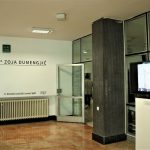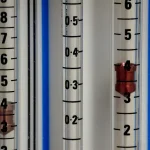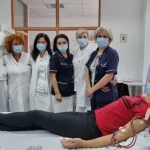The first implantation of an artificial heart has been announced at the Cardiac Surgery Department of the Split Clinical Hospital Center (KBC Split), revealed Mate Petričević, head of the Split Cardiac Surgery Clinic for N1.
Implanting a long-term mechanical circulatory support, i.e., an artificial heart, lasts approximately eight hours, and the first operation in Split will be performed at the Cardiac Surgery Department of KBC Split. This type of operation in Croatia is performed at the Zagreb University Hospital Center, where a team for mechanical circulatory support was formed, of which Petričević was a member until recently.
It is a complex procedure that includes a highly specialized team consisting of a surgeon, anesthesiologist, cardiologist, nurses in the Intensive Care Unit, physiotherapists, and psychologists.
“Hospitals that perform artificial heart implants have the status of centers of excellence in the field of cardiac medicine. Until recently, these types of operations were reserved for only a few centers in the USA and Europe, and soon KBC Split should be on the world map of expert centers for artificial heart implants,” says Petričević.
Candidates for artificial heart implants are mostly patients with hearts in the terminal failure phase, i.e., their heart function is dramatically low, and conservative treatment methods are exhausted.
Unfortunately, there are more and more young patients who need it. For them, an artificial heart can serve as a bridge to a heart transplant, while in the elderly, an artificial heart is the final form of treatment without the need for a later transplant.
“Lately, we have been witnessing patients who have had an artificial heart implanted as a bridging therapy until a transplant, but those who are satisfied with an artificial heart later give up the transplant,” said Petričević.
After surgery, patients stay in the hospital for three weeks because patient education is a critical aspect of treatment. At the hospital, the patient learns to live with the device to be independent once released.
Complications most often occur when too much blood-thinning medication is taken, bleeding occurs, or too little is taken, and the clot enters the pump system. In this case, the clot should dissolve or, in the worst case, the device is replaced with a new one.
The pump is a propeller that levitates in a magnetic field and rotates up to ten thousand revolutions per minute. Rotating blood flow is created according to the principle of the Archimedes screw, and this flow is constant, which is why patients no longer have a measurable pulse after an artificial heart is implanted.
“Previous generations of devices generated pulse flow; however, these types of devices were larger and more complex and therefore more susceptible to failures. Today’s technology has reached a high level, and in a few years, I expect that this type of device will have the dimensions of batteries for home use,” says Petričević.
If the operation goes well and the therapy is carried out without any complications, the installed device can last for more than 20 years.
Research is currently being conducted, and everything is being documented precisely. The results are encouraging, and Petričević believes it will get even better over time.
“When you consider 10 or 20 years of living with an artificial heart and compare it to the condition of a terminal heart patient who has exhausted the treatment option, it is clear that this is a big step in the treatment of heart disease,” he concluded.
For more, make sure to check out our dedicated lifestyle section.











